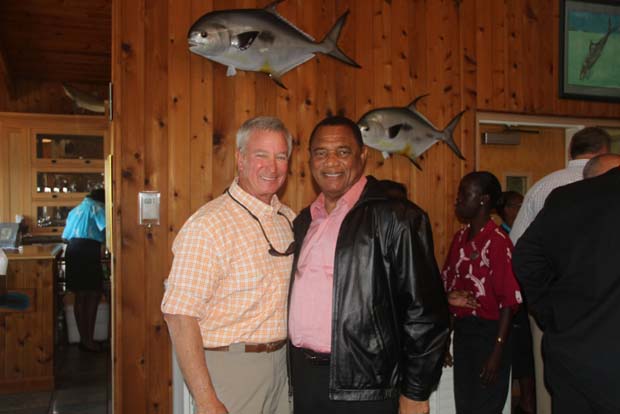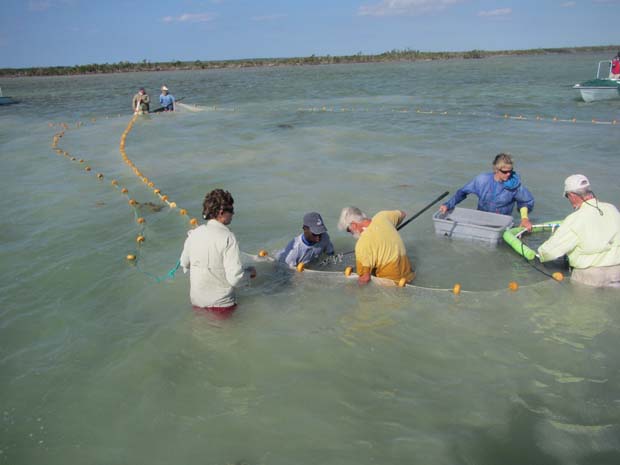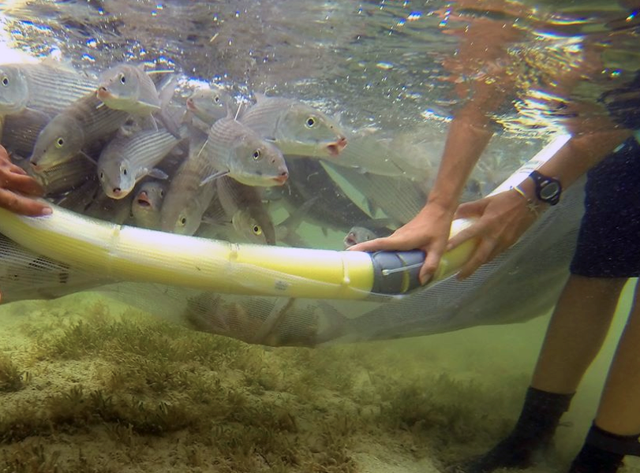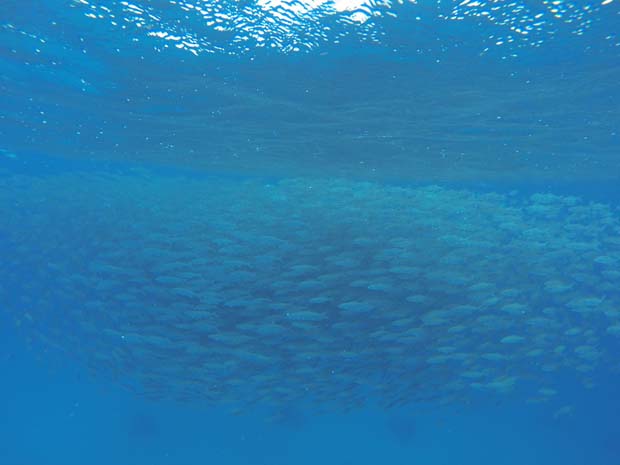The Bahamas Initiative Addresses Threats to the Bonefish Fishery
[dropcap]T[/dropcap]he Bahamas have some of the best bonefish fishing in the world, thanks to many miles of shallow flats, and to a community of fishing guides that act as stewards of the fishery and its habitats. In a study conducted in 2009, during the height of the Great Recession, the recreational fishery for bonefish in the Bahamas had an annual economic impact exceeding $141 million (USD). With more recreational fishermen traveling today as theeconomy recovers, that number is certainly higher. The fishery not only supports jobs, but also allows a culture that relies on the sea to continue.
Despite its economic and cultural importance, the fishery faces trouble. The trouble comes in the form of gillnets, resource extraction, and coastal development.
Gillnets:
Despite regulations that prohibit the capture of bonefish with nets, the use of nets to target bonefish is increasing. The most troubling case is on Long Island, where gillnetting on the flats has already negatively impacted the bonefish population, and is threatening the future of the fishery. Despite these illegal acts being reported by fishing guides and others, enforcement has been lacking. Whether the bonefish are being used for bait or are illegally sold at market, their capture brings significantly less economic value than if those fish remained alive and part of the recreational fishery. Nevin Knowles, head of Long Island Bonefishing Lodge, said: “If this keeps up for five years, our bonefish population in Long Island will be gone. They’re using, at the last estimate, a $58,000 bonefish to catch a 90 cent snapper, and they’re killing our industry,” referring to the estimated value of a single caught and released bonefish given the overall value of the fishery. He continued: “The tourists go to the Out Islands for the fishing. That’s the only thing that attracts tourists to Long Island. They’re killing the goose that laid the golden eggs.”
In the recent past, similar episodes have been reported on Grand Bahama Island and South Andros.
Dr. David Philipp, Chair of the Fisheries Conservation Foundation, sums it up well: “Bonefish are very susceptible to capture by netting, and removal of those fish could crush the Long Island bonefish population for years to come. This would destroy an extremely valuable industry that benefits the entire community. Everyone in those communities should act to prevent those irresponsible persons from stealing the Bahamas’ natural resources for their own purposes.”
Resource Extraction:
The flats of Grand Bahama Island are world-renown for their large and plentiful bonefish. One of the first bonefish lodges in the Bahamas was located on the east end of the island, adjacent to the expansive sand flats that extend for miles to the southeast. This area has been proposed as a National Park to provide protections to the bonefish fishery and other fisheries important to residents. These sand flats are being proposed as a site for sand mining, with sand dredged to a depth of 16 feet. Of particular concern is the area near Bursus Cay. After a public meeting in McLean’s Town in May 2014, Eric Carey, Bahamas National Trust’s Executive Director noted: “The East End Communities, especially the fishermen, have made a strong case for this proposed national park. Noting the importance of Bursus Cay as to the sustainability of their fishery, and the threat that the proposed dredging represents, they have asked Bahamas National Trust to expand the original proposal, to include this important area.” In a story about a similar meeting concerning the proposed park and possible dredging project as reported here . . . , local fisherman Cecil Leathern said: “We all know what will happen if this dredging is allowed; how it could destroy not only the bonefish flats and our lobster grounds, but also affect them down in Abaco. We need it all protected.”

Harold Brewer, Bonefish & Tarpon Trust board member and Managing Director of the Bahamas (L), with Bahamas Prime Minister Perry Christie (R) during a meeting about conservation of the bonefish fishery at Deep Water Cay in 2013. BTT photo.
Coastal Development:
After years of research and working with fishing guides, Bonefish and Tarpon Trust researchers have identified a bonefish spawning location on Abaco. Early data suggest that this may be the only spawning location for bonefish that inhabit the world famous Abaco Marls. Bonefish that live in the Marls for most of the year migrate to the spawning location each winter, and return to the Marls after spawning. A proposed resort development along the migration pathway and near the spawning site would disrupt spawning, with inevitable impacts to the bonefish populationand the fishery.
Bonefish Conservation:
Bonefish & Tarpon Trust has been working with collaborators to address these threats to the bonefish fishery in the Bahamas for the past eight years. BTT is working with science partners, fishing guides, and lodges to conduct tag-recapture research to identify the home ranges of bonefish. We’re also working to identify the migration pathways to spawning sites, and to identify spawning sites. This information is then used to develop habitat and fish conservation plans to ensure a healthy bonefish fishery. We’re hopeful that information gained in recent years on Grand Bahama Island and Abaco is being used to enact protections for the bonefish fishery and habitats on those islands. We are now applying efforts to other islands, including Long Island, Andros, Great Exuma, Acklins, and others.
How You Can Help:

A crew comprised of scientists, guides, and volunteers tag bonefish as part of the Bahamas Initiative. BTT photo.
While the information from the work of BTT and collaborators is essential to enacting conservation strategies for bonefish and their habitats, it is not enough. Your help is needed to ensure a healthy future for the fishery. Visit us . . . and Contribute to BTT to help fund the Bahamas Initiative. Write a letter expressing your concerns about the threats to the bonefish fishery. Email the letters to us, we’ll compile them and present them in the Bahamas.
Contact:
Dan Dow
dan@bonefishtarpontrust.org
(845) 239-6051









